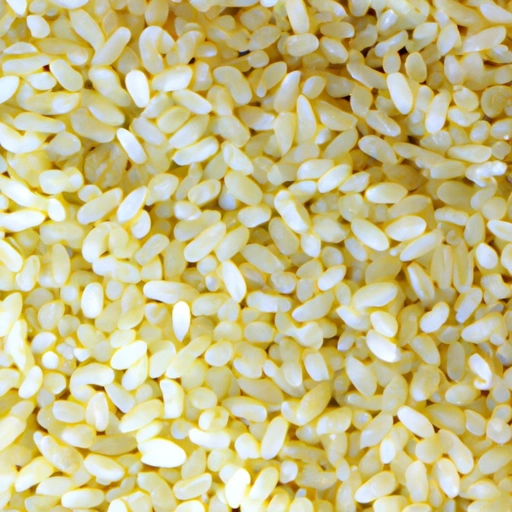Orzo
Description

Orzo, also known as risoni, is a form of short-cut pasta, shaped like a large grain of rice. In Italian, 'orzo' means barley, but the term refers to this pasta variety due to its resemblance in shape and size. Orzo can be made from white flour, whole grain, or a variety of other flours, giving it a diverse culinary range. It is appreciated for its texture and ability to absorb flavors, making it a popular ingredient in a variety of dishes across different cultures.
Common uses
Orzo is commonly used in soups, salads, pilafs, casseroles, and as a base for saucy dishes. It is also frequently served as a side dish, either plain, buttered, or dressed with herbs and cheese. Additionally, orzo can be used as a substitute for rice in risottos or stuffing for vegetables and meats.
Nutritional value
Calories
One cup of cooked orzo (approximately 4.9 ounces or 138 grams) contains about 200 calories.
Protein
This same serving size of cooked orzo provides roughly 7 grams of protein.
Fat
Orzo is low in fat, with 1 cup of cooked pasta containing approximately 1 gram of fat.
Carbohydrates
Carbohydrates are the primary macronutrient in orzo, with one cup offering around 42 grams.
Vitamins
Orzo can contain vitamins, especially if it's made from whole grains, including some B vitamins like folate.
Minerals
Depending on the flour used, orzo may provide varying amounts of minerals such as iron, magnesium, and selenium.
Health benefits
Whole grain orzo can be a healthy part of a balanced diet, offering dietary fiber for digestive health and a moderate amount of protein for muscle repair and growth. The B vitamins in whole grain orzo assist in energy metabolism and red blood cell formation.
Potential risks
As with any pasta, orzo is high in carbohydrates, which may be a concern for individuals managing blood sugar levels. Furthermore, it contains gluten, making it unsuitable for those with celiac disease or gluten sensitivities.
Common recipes
Orzo is featured in a variety of recipes, including Mediterranean orzo salads, creamy orzo risottos, and hearty soups like Italian minestrone or Greek avgolemono. It's also used in baked casseroles and as a side dish to meats and vegetables.
Cooking methods
Orzo can be boiled, simmered in broths or sauces, baked, or even lightly fried before cooking to impart a nutty flavor. It typically cooks in about 8 to 10 minutes in boiling water.
Pairing with other ingredients
Orzo pairs well with a variety of ingredients including fresh vegetables, herbs, cheeses, lean proteins like chicken or seafood, and rich sauces. Its subtle flavor and texture make it an excellent canvas for both bold and delicate flavors alike.
Summary
Orzo is a versatile pasta that offers culinary adaptability and nutritional value, particularly in its whole grain form. Its ease of preparation and ability to blend into numerous cuisines makes it a favored choice for home cooks and professional chefs worldwide. Whether used in traditional European dishes or inventive contemporary creations, orzo brings a delightful texture and versatility to the table.